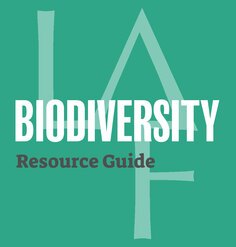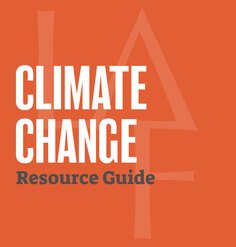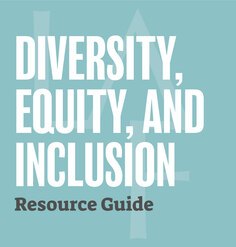Carbon Offsets for Travel: Considerations and Recommendations
Travel, particularly air travel, results in significant carbon dioxide (CO2) emissions per individual per trip. In 2019, LAF began to purchase carbon offsets for staff travel and LAF-funded program participant travel. LAF's Board of Directors agreed to purchase carbon offsets for their travel to and from LAF events. They are also encouraged to consider limiting and offsetting emissions from other business travel.
Recognizing that carbon offset programs and calculators for estimating the carbon footprint of travel are inherently imperfect, LAF worked to identify the most valid and reputable certified carbon offset organizations. Below, we describe this research, what we learned, and our recommendations for others who are interested in purchasing offsets.
Addressing the climate crisis requires individuals and organizations to take steps to become more aware of and mitigate their carbon footprint. Carbon offsets are just one among many tools and strategies. They must be used in addition to reducing travel.
Our Background Research
We started our research with some definitions. For our purposes, “carbon offsets” are donations through the voluntary carbon market to a reputable organization to support “carbon projects.” Carbon projects are carbon offset activities that have been certified by a recognized agency based on a specific set of criteria designed to ensure that they are either sequestering carbon or offsetting carbon emissions in other ways.
The process of purchasing carbon offsets for travel consists of two steps:
- Using a calculator to estimate the carbon emissions resulting from travel
- Making a donation to carbon projects through a legitimate organization to offset that amount
LAF staff reviewed 6 calculators and researched over 10 organizations and their carbon projects in order to make a recommendation. Most organizations offer built-in calculators which streamline the process by allowing users to calculate their footprint and make a contribution to carbon projects at the same time.
Factors we considered
1) Relative validity of the calculator used to estimate carbon footprint
LAF staff tried to ensure reasonable accuracy of carbon calculators while being mindful of the fact that these calculators make estimations based on many assumptions.
2) Potential of carbon projects to actually offset emissions
Types of carbon projects currently on the voluntary market include:
- Renewable energy and energy efficiency (e.g. wind energy and efficient cookstoves)
- Industrial gases and methane capture (e.g. abandoned coal mine methane)
- Biosequestration including forestry and agriculture (e.g. sustainable forestry and tree planting)
Some project types are generally regarded to be more effective than others in offsetting emissions. Renewable energy projects are generally well-regarded, while forestry/tree planting projects have been found to present a variety of issues such as permanence (how are plantings being protected long-term), displacement/impacts on local populations, and planting of non-native species that have little ecological value.
3) Certification by or compliance with internationally-recognized standards
The world’s major carbon standards include the Gold Standard, the Verified Carbon Standard, and the Climate Action Reserve. These standards are designed to certify that projects reduce carbon dioxide emissions, sequester carbon, and provide additional benefits for communities. In rare cases, even certified projects have been found to be ineffective, mismanaged, or contributing to issues like human rights violations, but choosing certified projects minimizes this potential.
4) Portion of funding directed to projects
LAF was only interested in programs where at least 80-90% of the offset purchase funding goes directly to projects as opposed to supporting the organization’s overhead costs.
5) Transparency about the carbon projects
Organizations provide varying degrees of information about the specific projects their offset programs support. LAF selected organizations that clearly communicate details such as location, purpose, timeline, partners involved, and community impacts.
Recommendations
Below are the carbon offset programs that LAF uses for staff travel and has recommended to our Board of Directors to offset their travel to and from LAF events. The websites allow users to easily enter trip information and estimate the amount of CO2 to offset. (Note that emissions estimates vary. For example, a round-trip flight from Washington, DC to San Francisco ranges from 0.825 to 1.42 metric tonnes, depending on which calculator is used.) We've included information about each program so that users can select based on priorities such as cost, ease of use, and project parameters.
Cool Effect Travel Offsets
Advantages: Super-easy and lowest cost
Inputs: Enter flight hours and whether round trip or one-way
Cost: $7.85 per metric tonne
Types of projects: Cookstoves, forests, renewable energy, biogas digesters
Carbon Fund Air Travel Offsets
Advantages: Super-easy and supports a wide variety of projects
Inputs: Select whether your flight is up to 10k, 40k, 100k, or 200k miles
Cost: $10 per metric tonne
Types of projects: Energy efficiency, renewable energy, forests
Terrapass Carbon Calculator
Advantages: Supports US-based projects
Inputs: Click the airplane icon and enter flight origin and destination, estimated miles traveled, or trip length
Cost: ~$11 per metric tonne
Types of projects: Farm power through animal waste, clean energy from wind farms, abandoned coal mine methane
Native Energy Travel Calculator
Advantages: Can offset several modes of travel all in one transaction
Inputs: Click “Calculate My Emissions” and enter the parameters for each trip or travel method (automobile, rail, airplane, and/or bus)
Cost: $15.50 per metric tonne
Types of projects: All purchases support the Honduras Coffee Growers Clean Water Project
Gold Standard: Offset Your Emissions
For those who want to choose specific projects to support, the above Terrapass or Native Energy calculators can be used to calculate the number of metric tonnes to offset, and then a contribution can be made to selected Gold Standard projects for an equivalent amount.
Cost: $10-18 per metric tonne
Types of projects: Widest variety, including agriculture, energy efficiency, renewable energy, forests, waste management, water
NOTE: The above links and cost/project information are accurate as of February 2020.











